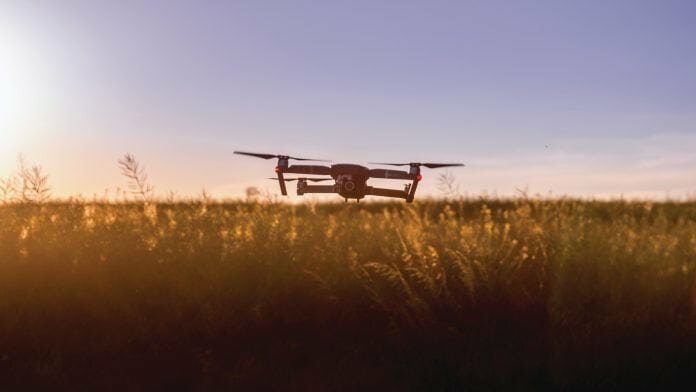
Government Europa takes a look at how drone technology is changing and the limitations for their take off in the commercial industry.
It is believed that drones could make up one tenth of all aircraft operating in the European Union in ten years. The European Commission predicts that by 2050 the production of unmanned aerial vehicles (UAVs) will account for 150,000 jobs across the continent. When it comes to the regulatory environment, the European Parliament are fighting to change the regulations set by the Civil Aviation Authority (CAA) in the UK. However, regulations differ across the EU and this is the major thing preventing new drone technology.
An agreement on advanced aviation
As of the 12 June 2018, MEPs approved an agreement on EU-wide regulations for drone usage. Most drones come under different national rules, and it is believed that these can hamper market development. However, MEPs agree that the common level of safety that these principles will follow can allow manufacturers the predictability necessary to develop products and services.
Drones will now need to be designed differently, so that when they are under operation they do not put people at risk. The European Commission are deciding which kinds of drones will need to be equipped with specific requirements, such as:
- Altitude limits;
- Maximum operating distance;
- Collision avoidance;
- Flight stabilisation; and
- Automated landing.
All of these features will enhance the safety of drone usage, hopefully then allowing more research into drone technology.
There will also be a change in how drones are operated, with operators needing to be placed on a national register and their drones marked for identification. Providing a uniform level of safety across the EU and providing clearer rules into the manufacturing and operating of drones will hopefully help to boost the sector and, therefore, also increase research into future UAVs.
Drone technology and the use of drones in the commercial industry
Drone technology is quickly evolving in the hope that, subsequently, UAVs can be used by businesses and organisations to help boost their efficiency and, eventually, generate more income. Indeed, new drone technologies are proving to take precedent after a new government-backed trial in the UK saw the CAA grant permission for a drone to be flown beyond the operator’s line of sight for seven miles.
New technology being developed for UAVs is also demonstrating that longer distances and battery life is possible.
Ordinarily, there are strict rules behind how high and how far a drone can be flown in the UK, depending on its weight. These regulations are based around safety standards and any drone over 20kg in weight requires the operator to hold a licence which is granted by the CAA.
Media industries were one of the first sectors to benefit from the use of drone technology as people realised the ease of shooting aerial footage at a fraction of the cost, in contrast to the usual method of flying a helicopter or light aeroplane. Media organisations have also noticed that UAV technology has allowed them to generate different and new footage. However, not everybody is happy about drone technology being on the rise when it comes to capturing imagery and footage.
A number of premier league football grounds have set restrictions by geofencing to stop drones flying overhead. The restrictions have gone as far as being embedded into the GPS systems at the time of manufacture. As reported in a press release by Finn Partners, Dr Kevin Curran, senior member at the IEEE, a technical professional organisation for the advancement of technology, also expressed the importance around drone usage and the new EU privacy laws: “Businesses should take into account the privacy laws if they are taking an image/video with a drone as these could fall under Europe’s recent General Data Protection Regulation (GDPR).”
Drones are also being used in the defence sector, with emergency services, such as the police, benefitting from enhanced technology. Police forces are using UAVs to monitor large crowds, and it is perhaps only a matter of time before drones start being used in car chases. The fire brigade is also using drone technology during incidents, where a drone can transmit high-definition and infrared images, allowing the firemen to assess situations and take charge.
New technological adaptations for agriculture
Drone technology is also being extended into agriculture as new technology allows farmers to fly drones over their crops, collecting data about where fertiliser needs to be increased or decreased. Farmers can then upload this data into their tractor’s GPS, which will then spread fertiliser based on the data collected using the technology.
It is perhaps of little surprise as to why the European Parliament and the European Commission are wanting to change regulation in commercial drone technology and operation across the EU as a whole, as their uses are becoming more advanced than many other operating aircraft systems, but they are also noticeably cheaper to use and run.
Curran elaborated on his thoughts on the role of UAVs in commercial industry, adding: “It will not be uncommon in five years to see drones delivering packages, with groceries just the beginning. One example of the sort of retailer who will be using them will be local pharmacies: people will order repeat prescriptions online and have the prescription delivered to local homes by drones. Drones will also start to be used as first response units for medical emergencies, reducing the cost of helicopters in many scenarios. However, increased flight time will be important if there is going to be significant growth here.”


















